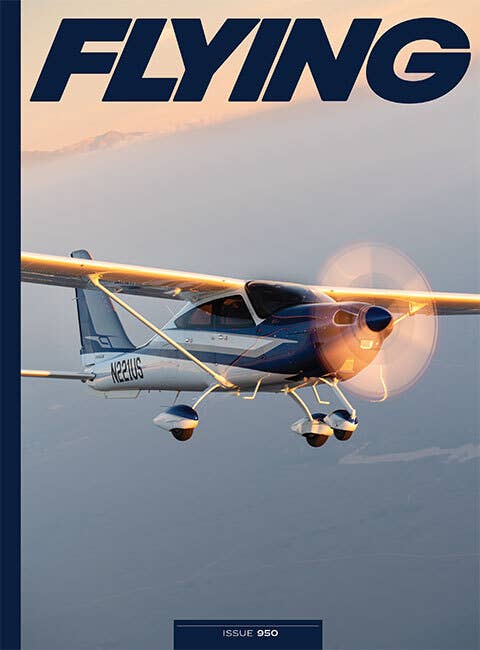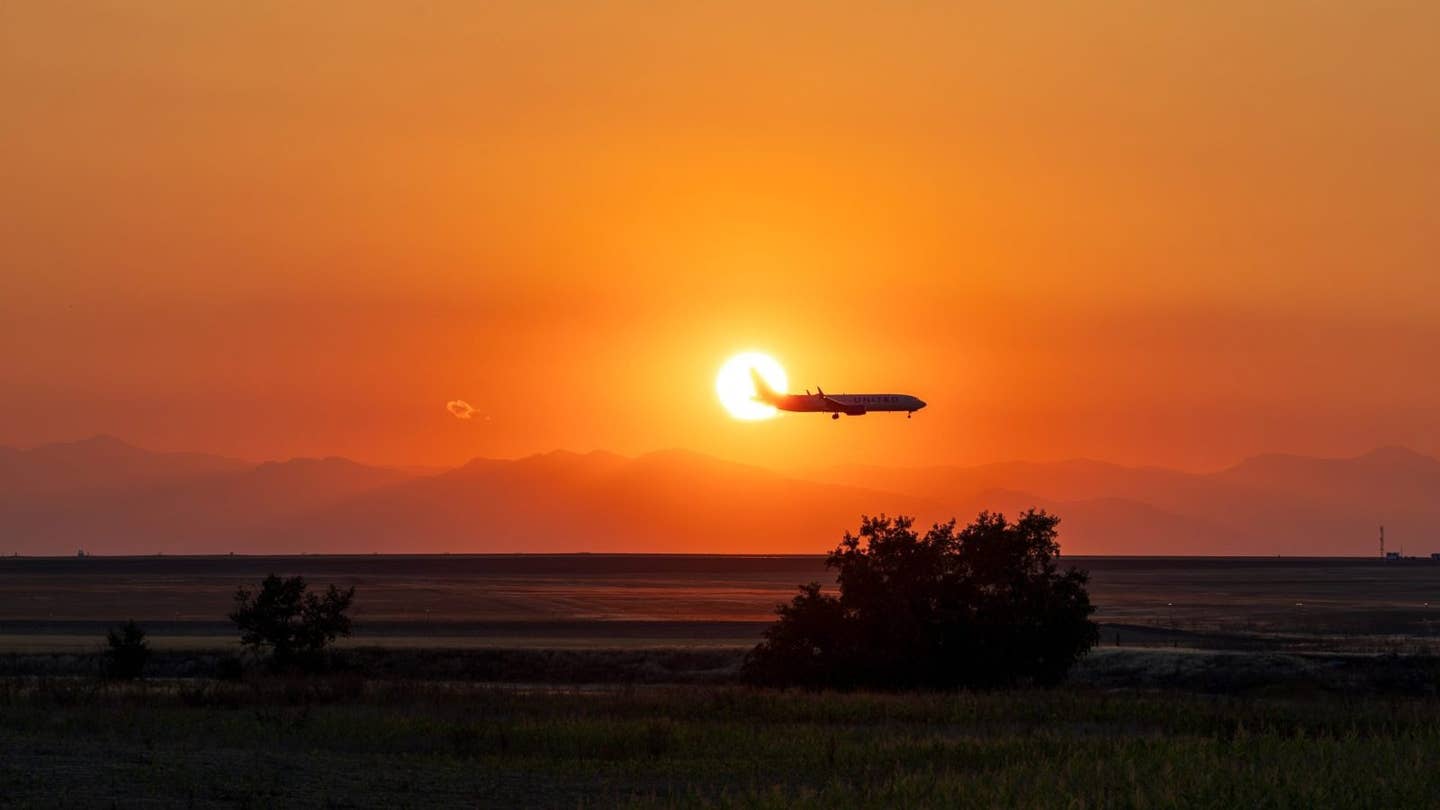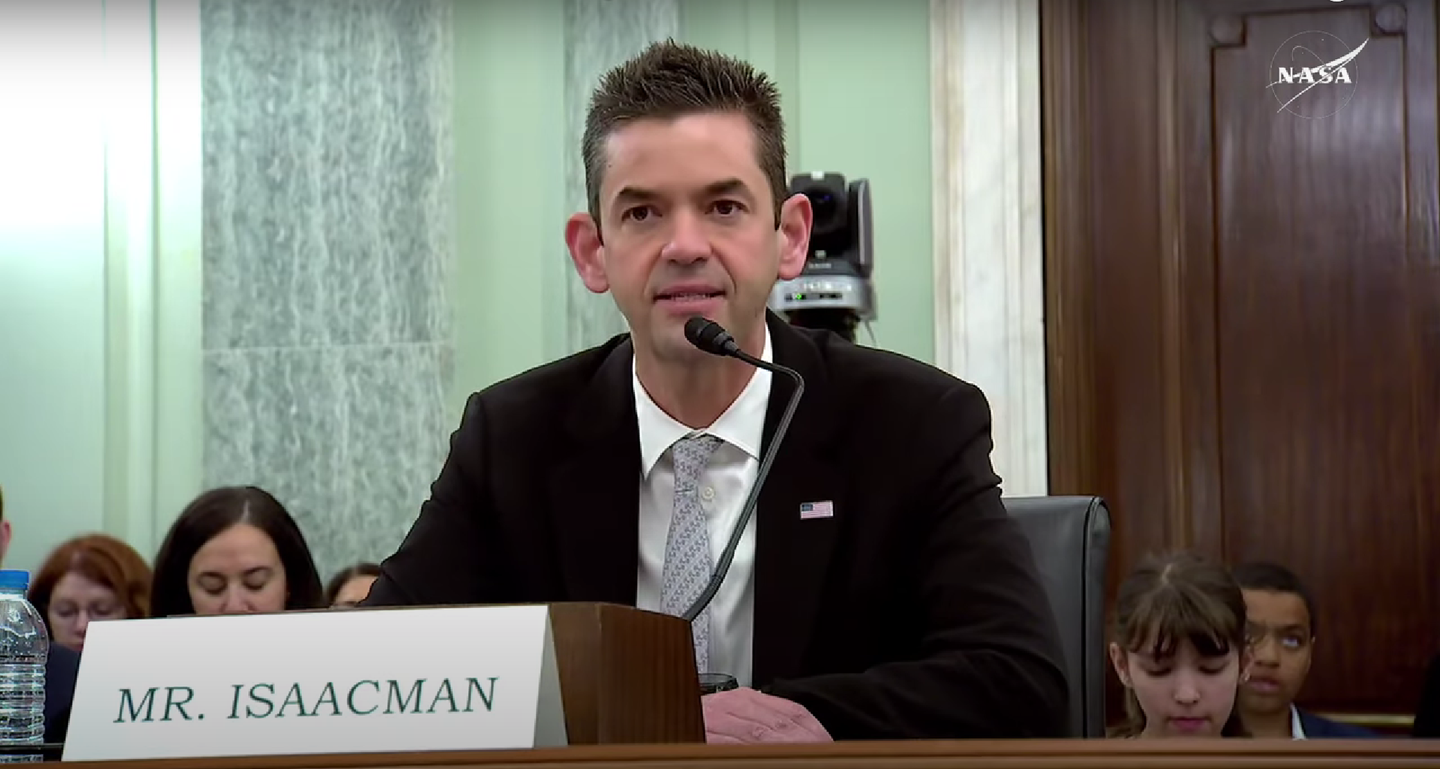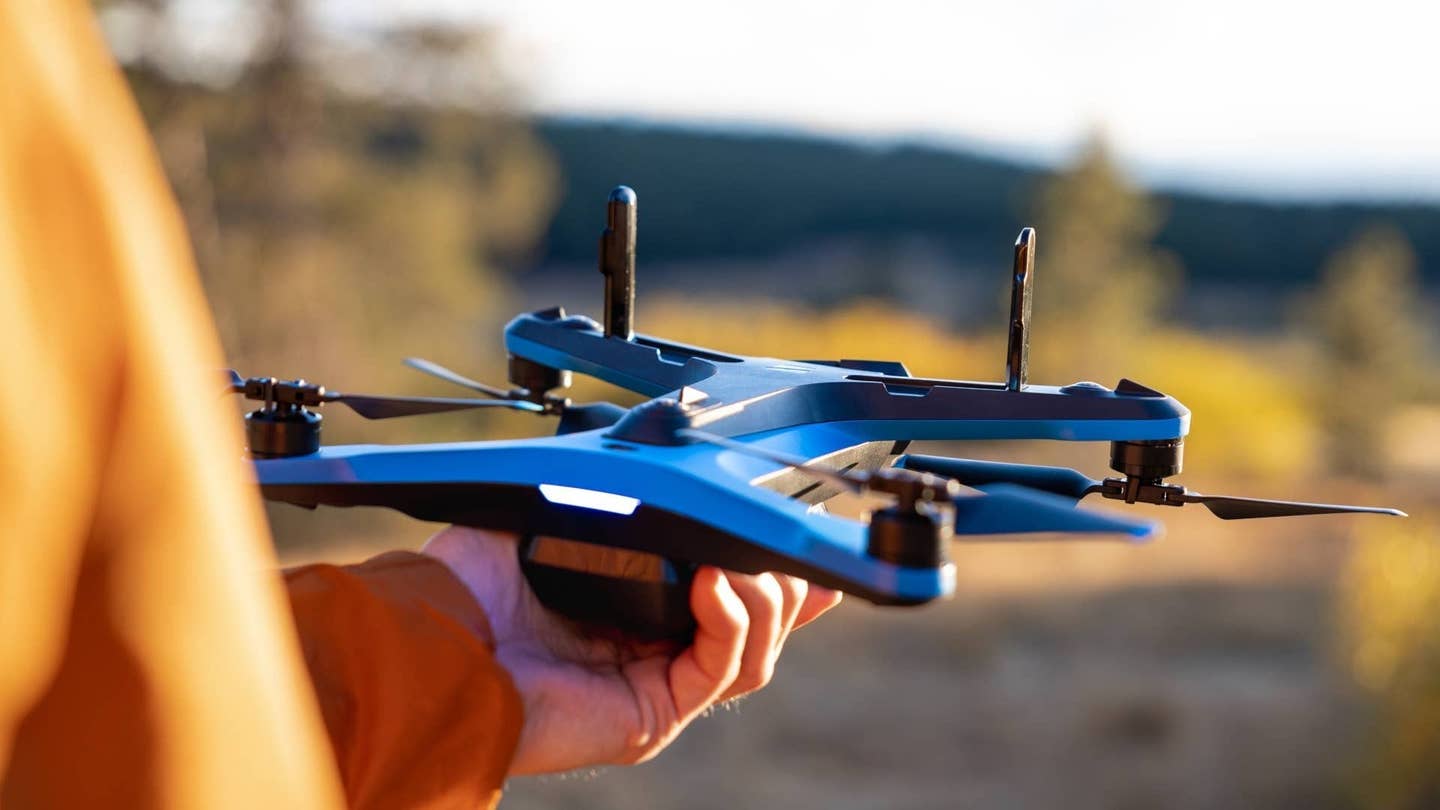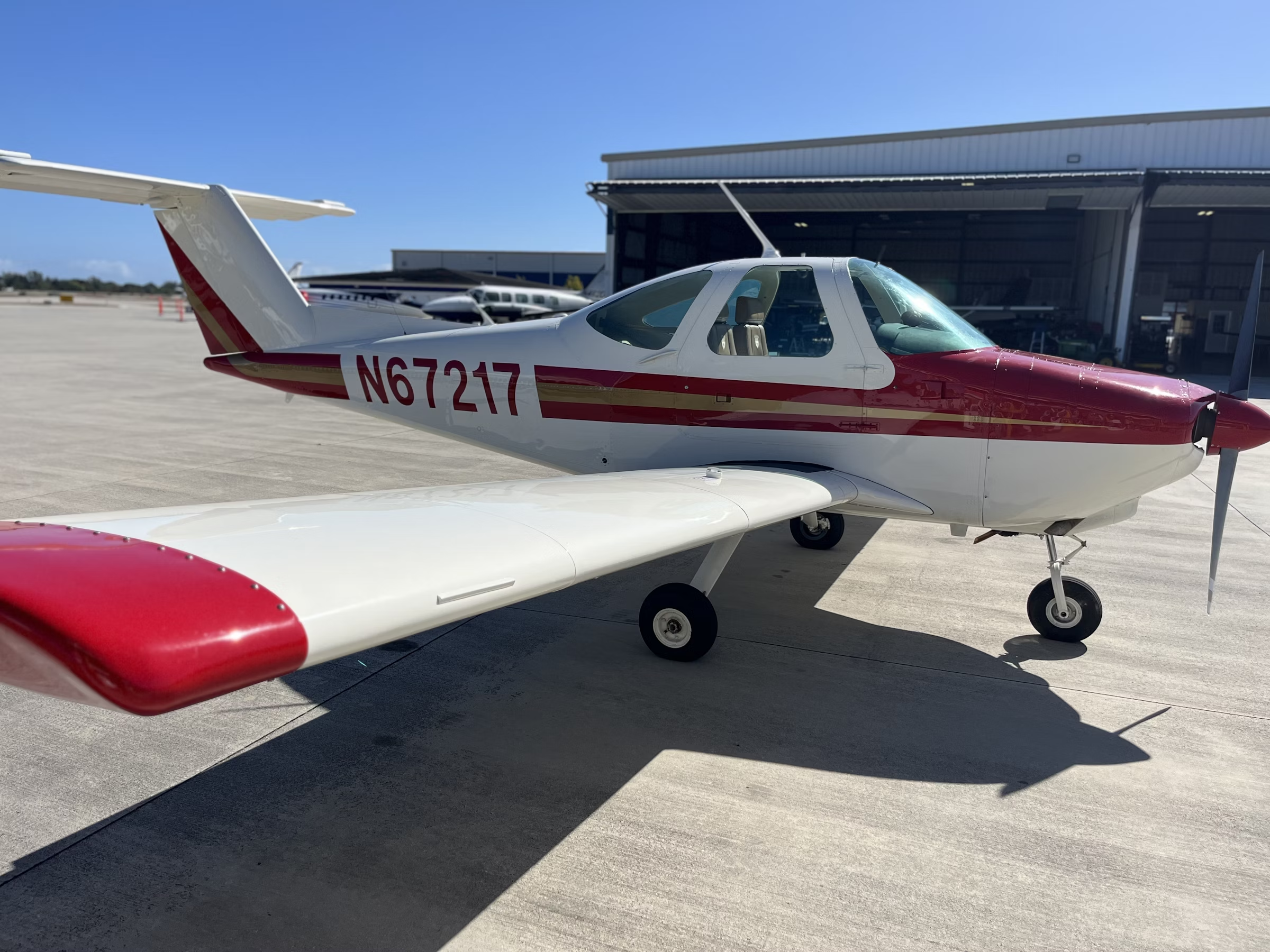It Comes Down to This: In Garmin We Trust
Sweaty palms and button pushing are all part of being a pilot.
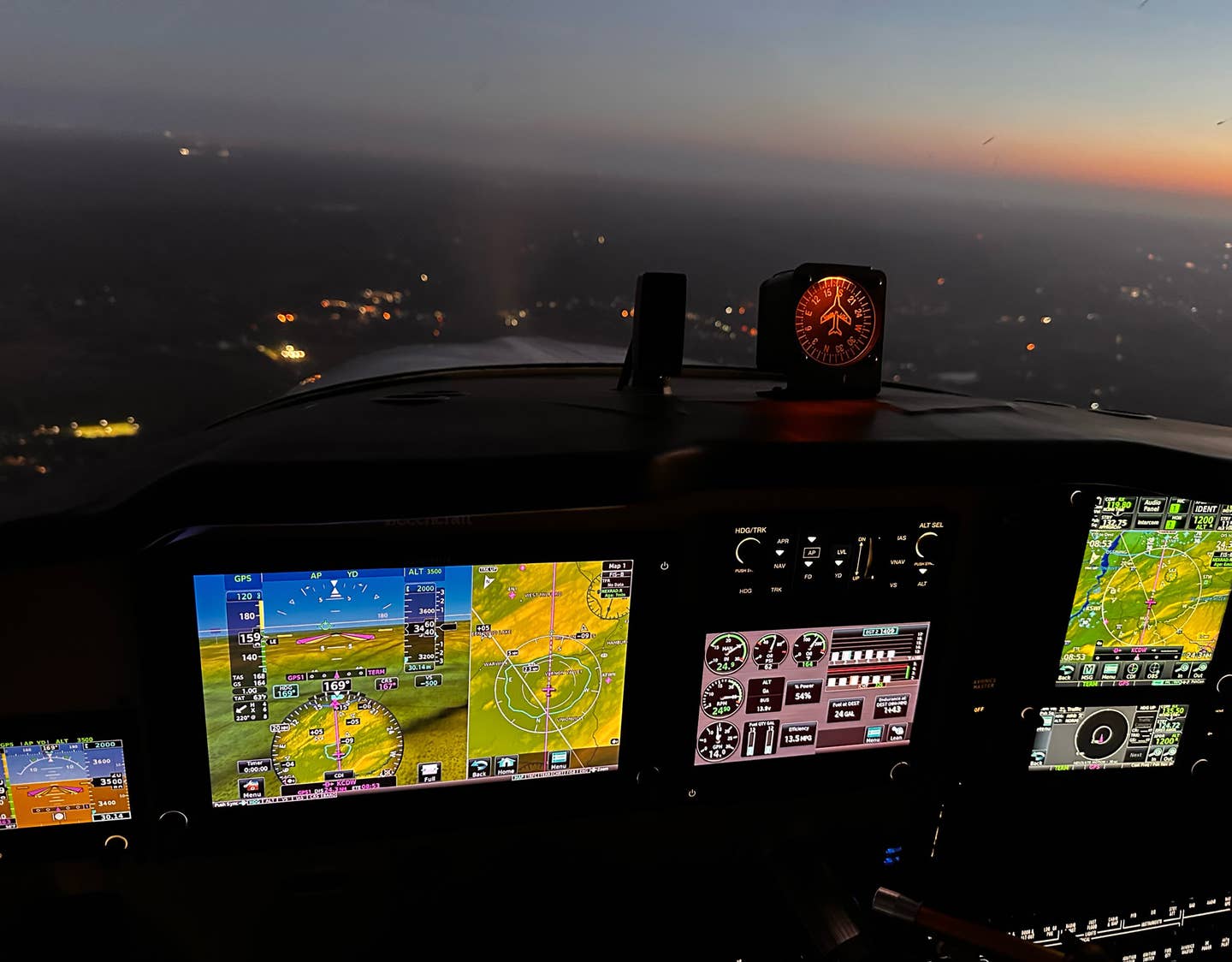
FLYING contributor Ben Younger says there is simply no world where his skill set and ability to execute will ever be able to beat his avionics. [Courtesy: Ben Younger]
On a cool, early October afternoon, I was climbing away from Runway 32 at KMIV (Millville, New Jersey) on the LEEAH 5 departure.
Accelerating to 120 kias, I picked up the gear and started the required 180-degree right turn toward the LEEAH intersection. The ASOS promised 900-foot ceilings. Sometimes they lie in the brochure. I was in the soup at 600 agl and quickly found myself a touch disoriented—and a little behind the airplane.
If you're not already a subscriber, what are you waiting for? Subscribe today to get the issue as soon as it is released in either Print or Digital formats.
Subscribe NowNow, I don’t normally hand the controls over to George until I am at least 800 agl, but I had everything set up in my avionics stack: pitch attitude using the flight director, departure procedure loaded, and altitude preselected. All I had to do was push the AP button, and that’s exactly what I did. The GFC500 autopilot took over while I took a breath.
With the extra bandwidth freed up, I announced my direction of flight on the CTAF, then switched to Departure, which gave me an immediate turn to another intersection that was 110 degrees off my current course. Two button pushes and we exited the right-hand turn, banking gracefully to the left—another opportunity for disorientation averted.
So, what happened? I wasn’t expecting to transition to instruments that quickly, and my sudden eye movement combined with the climbing turn caught me out. It’s easy to see how things can go south in a hurry for the unprepared. I thought of Kobe Bryant’s helicopter accident. His pilot was instrument rated, too.
But aren’t we meant to be able to do all that while hand-flying?
Yes. However, just as we stay sharp as a backup to the possibility of a failing AP, there is no reason the AP can not act as backup to a momentarily f(l)ailing pilot. I once asked Raymond, the lawnmower mechanic at my local shop, what the most common failure he sees in a zero-turn mower I was considering buying. He answered without hesitation: “the operator.”
While I’m sure you can Google and find AP failures, these events are outliers. There is simply no world where my skill set and ability to execute will ever be able to beat my avionics.
We have all heard the “children of the magenta line” critique, and there is certainly merit to practicing your hand-flying skills. But I would argue that IMC conditions 12 miles from the busy Class B of Philly ain’t the place.
My sense after five years of flying behind a Garmin suite of avionics is that the magenta line has only been a benefit to me. What you don’t hear often is what a great instructor your avionics can be. Watching the plane intercept an approach course, descend on a glide path, and fly a complicated missed approach procedure is one hell of a tutorial.
Once past Philly and approaching Newark airspace, I was given a lengthy reroute around all of New York City to the JFK VOR. I quickly declined as this would take me close to an hour out of the way. I canceled IFR as I had climbed on top at this point. I knew I’d have to get another clearance later on to descend into KMSV, but the absurdly-scenic routing would have put me right at fuel minimums.
The next two Newark controllers were slammed, both explicitly telling me not to make any altitude changes without checking in. The third controller was much less busy and asked me what I was up to. I requested an IFR clearance, and he immediately told me to descend to 7K (from 7.5) and to “consider myself IFR,” even though he had not given me a routing. When I thanked him with a little extra enthusiasm, he replied, “No problem. I’ll send you the bill.”
It was almost dark by this time and I was descending in solid IMC. I checked the ATIS at Sullivan County. Ceilings were variable between 300-600 feet. Raining. Low vis. These would be the most difficult conditions I had ever attempted an approach in.
I was hand-flying at this point to regain the confidence I lost in the climbout. I was comfortable and way ahead of the airplane. I had the weather, the RNAV 33 approach loaded, and I was on speed. I could have easily continued to hand-fly the approach to “stay sharp,” but I’m going to argue that there is no point in doing so under these conditions.
By letting the AP fly the approach I was able to monitor the engine, talk to ATC, and ultimately, look for the runway environment as I approached minimums—all the while not having to worry about staying on the glide path or veering off course. Throw in a missed approach, where I only have to worry about picking the gear up and adjusting the throttle (mixture and prop were already set for climb) while the GFC500 flies the charted procedure, and the possibility of a pilot error grows further distant.
In the end, I broke out 100 feet above minimums, dumped the flaps, and took over the controls, coming in for a greased landing. Palms relatively dry.
Could I have flown that approach by hand? Of course. And I normally practice hand-flying every third or fourth approach. But in those conditions I need to be honest with myself. Who is more likely to make an error—me or George?
Practice hand-flying under the hood. Practice with a fellow pilot sitting in the right seat. Practice when there are 800-foot ceilings. But when the chips are down and you’re flying single-pilot IFR to minimums, let Garmin be thy savior.
P.S. If you’re interested in seeing this approach, it can be found on my Instagram page: @thisisbenyounger.
This column first appeared in the December Issue 953 of the FLYING print edition.

Sign-up for newsletters & special offers!
Get the latest FLYING stories & special offers delivered directly to your inbox

